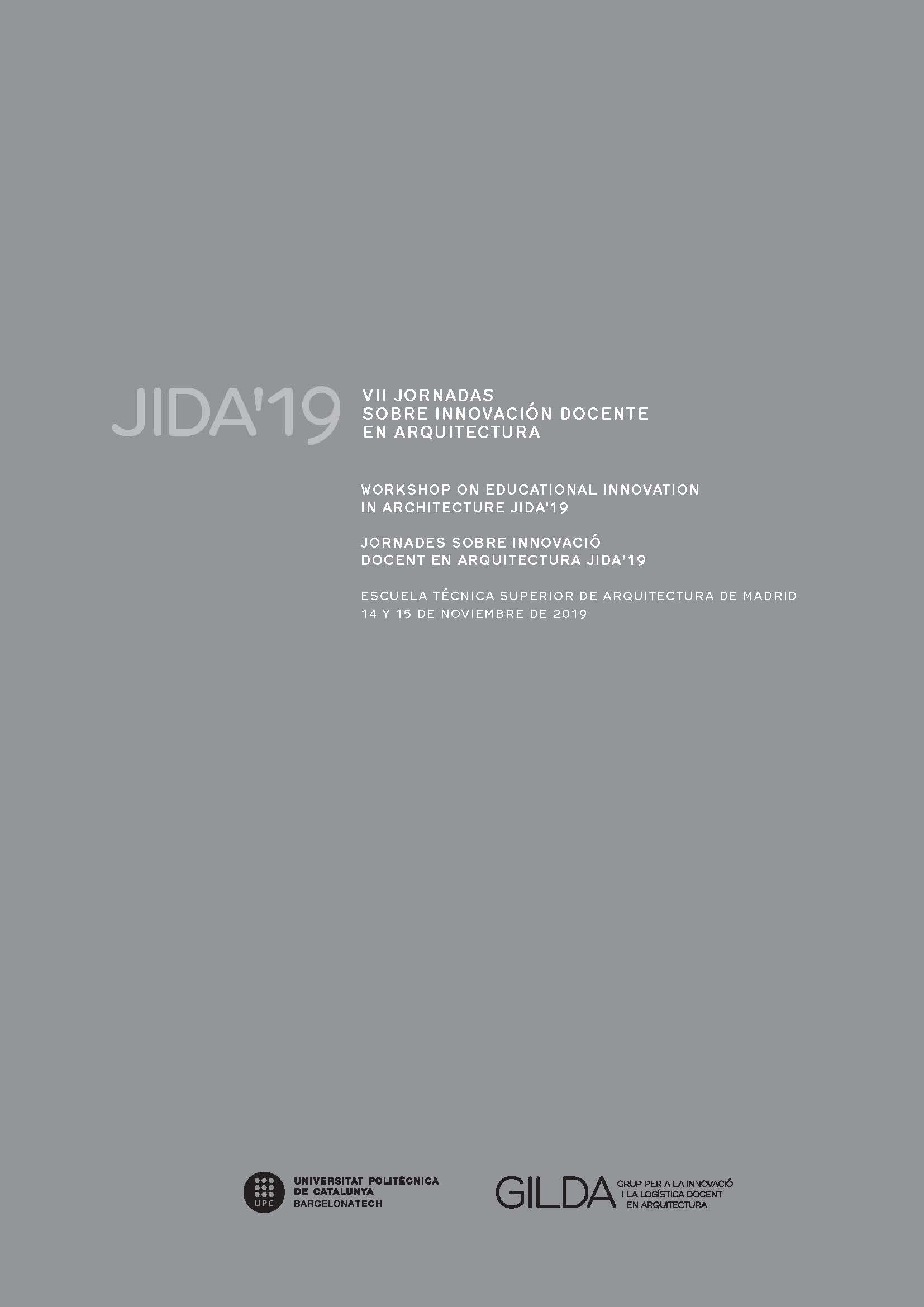Methodology: “Learning by doing”, applied to the Architectural Constructions area
DOI:
https://doi.org/10.5821/jida.2019.8332Abstract
At present, people who are able to function in a changing environment and solve problems reflexively and planned are demanded in a work world. So, the education methodology must be changed to train people who are able to activate the knowledge acquired, who can use different strategies to respond to problems and work in teams. This research project aims to develop and promote creative thinking processes in university teaching. It is a teaching innovation project developed by the Department of Art and Architecture of the University of Malaga. It is intended to bring the student closer to the architect's working life, through real practices, where the competences of the profession are developed, thus enriching the learning process and facilitating the acquisition of professional skills linked to the design and construction process. The results achieved have shown that learning through practice, exercise, and repetition known as learning by doing improves the skills, dexterity, and productivity of students and professor.
References
ARENTSEN MORALES, E. (2006). Los estilos de aprendizaje desde el taller de arquitectura: Evaluación y propuesta. Revista electrónica UACh, 10-15.
BRAVO VALDIVIESO, L. (2014). PsicologÃa cognitiva y neurociencias de la educación en el aprendizaje del lenguaje escrito y de las matemáticas. Revista IIPSI, 25-37.
CAPDEVILA-CASTELLANOS, I. (2017). Aprende negociando: la realidad es mi campo de juego. Jornadas sobre innovación docente en arquitectura (págs. 301-332). Barcelona: Iniciativa digital Politécnica Oficina de Publicacions Académiques digitals de la UPC.
DEWEY, J. (1952). La búsqueda de la certeza: un estudio de la relación entre el conocimiento y la acción. Traducción Eugenio Imaz. México: Fondo de cultura Económica.
JEREZ, O. (2015). Aprendizaje Activo, Diversidad e Inclusión. enfoque, MetodologÃa y Recomendaciones para su Implementación. Santiago: Universidad de Chile.
MOERBEKE, G. (1982). MatafÃsica.Traducción de ValentÃn GarcÃa Yebra. Madrid: Edición trilingüe.
RODRÃGUEZ GARCÃA, A. y Ramirez López, L. (2014). Aprende haciendo-Investigar reflexionando: Caso de estudio paralelo en Colombia y chile. Revista Academia y Virtualidad, 53-63.
ROSERO-FÓREZ, H. M. (2015). Aprendiendo fuera de las aulas: metodologÃa para la construcción de un recurso educativo móvil. Trabajo fin de máster.
RUIZ SANCHEZ, A., J.A., G. C. y MartÃnez Carrillo, M. (2010). Un ejemplo de innovación docente en la adquisición de competencias fuera del aula. I Jornadas sobre Innovación Docente y Adaptación al EEES (págs. 257-260). Granada: Goldel Impresores Digitales, S,L.
RUIZ-JARAMILLO, J. M.-D., Alba-Dorado, M.I., Cimadomo, G., Jiménez- Morales, E. y Joyanes-DÃaz, M. D. (2016). TIC+ABP: dos instrumentos para la innovación docente en Arquitectura. IV Jornadas de Innovación Docente en Arquitectura, p. 387-396. Valencia.
SCHUNK, D. (2012). TeorÃa del aprendizaje: una perspectiva educativa. Pearson Educación.






















